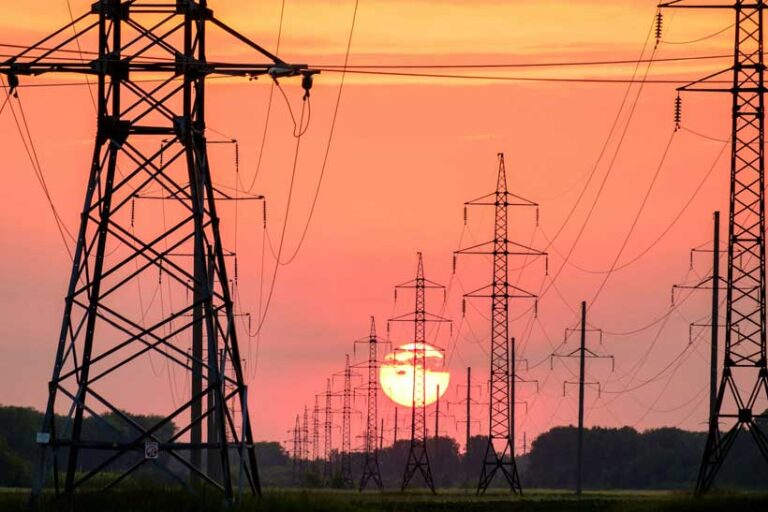Pakistan’s energy crisis has further exacerbated an already tense political situation in the country. The PTI has formed the provincial government in KPK province since February 8.Number General elections. The province is already in a deep economic crisis due to a long-running dispute with Islamabad over NFC allocations, power outages and rolling blackouts.
Last month, the KP Chief Minister took the matter into his own hands by visiting the DI Khan power grid station where people had complained about 22-hour power outages every day. PTI leaders from other parts of the province took similar action at power grid stations in their respective cities, which created a rather dysfunctional situation for WAPDA, the federal agency responsible for the production and management of water and energy throughout the country. Several FIRs were filed against PTI local leaders, but fortunately, the situation was resolved through dialogue and consultations with the provincial and central governments. This was announced in a joint press release by the KP Chief Minister and representatives of the federal government on May 27. According to the announcement, the two parties agreed to overcome their differences and reduce power outages in KP province, settle outstanding debts, and resolve the issue of power grid losses in KP province. While the situation has improved significantly since then, these incidents leave many questions about the political approach of various parties to the country’s decade-long energy crisis that need to be answered.
The most obvious question at this point is why a country with a hydroelectric potential of 40,000-70,000 megawatts ended up in such a crisis in the first place. The short answer is national decisions to get quick results in order to preserve political capital. These national decisions met the growing demand for electricity for the time being, but they put Pakistan’s energy sector on a very dangerous trajectory.
Pakistan’s current energy crisis has its roots in the 1990s when the country decided to introduce Independent Power Producers (IPPs) who were allowed to generate electricity by burning imported fossil fuels. Prior to 1994, hydropower was the primary source of electricity generation. Projects such as Mangla and Tarbela secured the country’s electricity needs. Initially, it was said to be a temporary solution until a national consensus could be reached on large hydropower projects where the provinces of Sindh and KPK had technical concerns about the availability of water in the Indus River system. Unfortunately, instead of resolving the concerns of smaller provinces or finding alternatives to mega hydropower projects, subsequent governments continued the trend of providing a stop-gap solution to load-shedding through IPPs, resulting in hydropower, once the primary source of electricity in the country’s power mix, being replaced by expensive imported oil-based generation.
Over the past decade, while construction of Diar Mir Basha and Das hydroelectric projects began, Pakistan’s energy crisis transformed into an existential crisis – a circular payment crisis. This crisis arose during the last PMLN government, from 2013 to 2018, when new agreements with IPPs were again signed and clauses such as “capacity surcharge” were introduced to quickly meet the growing demand for electricity without losing political capital. Under this crisis, the Pakistani government pays the IPPs an agreed amount from foreign currency (for example, US dollars) regardless of the amount of electricity purchased. The electricity bill to the IPPs is paid separately. These contract terms created a severe payment crisis in the energy sector (first electricity, then gas), forcing the government to increase the per unit price of electricity, creating a further crisis for Pakistan’s exporters. They had to compete in the international market with vendors who enjoyed subsidized electricity prices at home and had lower production costs.
While Pakistan is grappling with cascading crises resulting from poor energy planning over the last three decades, issues such as population growth, industrialization, grid losses, power theft, extremely low efficiency of DISCOs and GENCOs, confused policies towards IPPs etc are other pressing issues regarding the energy sector to which political parties have not paid any attention.
All political parties must refrain from using the energy issue to settle scores. The energy sector is of strategic value to the homeland as it not only holds the key to the prosperity and progress of future generations but also ensures their very survival. There needs to be a national consensus on the nation’s energy security and, like our strategic arms programs, it needs to be treated above political ambitions.
Merely meeting the required megawatts with expensive non-renewable resources like fossil fuels cannot be called energy planning or energy security. This should be the biggest lesson learnt in the last 30 years. Hydro and nuclear energy options should be maximised as they not only ensure cheap power to people and industries but also ensure full return on investment (ROI). Diamir Basha and Das Dam should not be the only big dams in the country. WAPDA has completed feasibility studies for similar projects. These should be started as soon as the hydro plants currently under construction are completed. IPPs running on fossil fuels should be banned in the country. New investments in the energy sector should only be allowed in hydro, solar or wind power plants. It is time for political leaders to come together and ponder these proposals on a war footing as the energy demand is increasing by the day and taking politically motivated populist measures will only bring new dangers to future generations and the nation.

